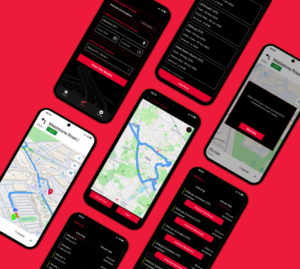How to Build a Daily Routine for a High Needs Baby on the Autism Spectrum
Raising a high needs baby on the autism spectrum can feel overwhelming, but building a daily routine can help bring...
Raising a high needs baby on the autism spectrum can feel overwhelming, but building a daily routine can help bring structure, peace, and growth to your child’s day. Many parents often ask, does high needs baby mean autism? While not all high needs babies are on the spectrum, some behaviors do overlap—such as intense reactions, trouble sleeping, and sensory sensitivities. That’s why creating a personalized and predictable routine becomes essential for both the baby and the caregiver.
Why Routines Matter for High Needs Babies
Structure creates safety and reduces stress
High needs babies thrive on predictability. A daily routine helps them know what to expect, which can lower anxiety and reduce meltdowns.
Encourages learning and communication
Repetitive routines help babies start to understand language and actions. Over time, this promotes communication—even if it’s nonverbal at first.
Start the Day With a Calm Wake-Up
Consistency from the moment they wake
Try to wake your baby around the same time every morning. A soft light, quiet music, or gentle voice helps them adjust calmly to the day.
Follow the same morning steps
Do diaper changes, breakfast, and getting dressed in the same order daily. This helps your baby begin to learn patterns through repetition.
Include Sensory-Friendly Activities
Give them safe ways to explore
Many high needs babies on the autism spectrum have strong sensory preferences. Provide textures like soft blankets, squishy toys, or water play.
Watch their reactions
Some babies may enjoy light bouncing, while others may become overwhelmed. Let their responses guide you when adding or removing activities.
Build in Time for Movement
Movement helps focus and mood
Even simple stretches or crawling time on a mat can help your baby release energy and improve their mood. Gentle rocking or bouncing can also help.
Make it part of the routine
Have a set time—maybe after a snack or nap—dedicated to movement. Repetition builds comfort and creates a predictable rhythm to the day.
Use Visual and Sound Cues
Support understanding with clear signals
Babies on the spectrum often respond well to visual or auditory cues. Use pictures, songs, or sounds to signal when something is about to start.
Helps reduce transitions stress
For example, always play the same song before nap time or show a picture of food before feeding. These small cues give your baby time to prepare.
Offer Short, Structured Play Sessions
Focus on quality, not time
High needs babies may get overstimulated quickly. Keep play sessions short (10–15 minutes) with plenty of breaks in between.
Let playtime have a clear beginning and end
Use a phrase like “Time to play!” when starting, and “All done!” when finishing. Over time, your baby will begin to understand the structure.
Consider ABA Center Based Therapy
Professional support in a structured environment
If your child is diagnosed with autism, ABA Center Based Therapy can offer evidence-based help. These centers provide therapies focused on behavior, communication, and social skills.
Works hand-in-hand with your home routine
What your child learns during sessions can be continued at home. Therapists often provide simple exercises or strategies for parents to use daily.
Create a Peaceful Nap and Bedtime Routine
Predictability leads to better sleep
Use the same steps each time—dim lights, quiet voice, same song, and cuddles. Even babies who resist sleep respond over time to steady routines.
Keep the environment calm and simple
Avoid screens, loud toys, or bright lights before sleep. A calm setting helps prepare their brain and body to rest.
Include Feeding Times in the Routine
Use consistent times and locations
Even if your baby isn’t on a strict eating schedule, offer meals and snacks at regular intervals. Feeding them in the same chair or space helps create comfort.
Give them time to adjust
High needs babies may take longer to settle into eating. Be patient and try to follow the same steps—wash hands, show the food, and use familiar bowls.
Allow for Flexibility and Breaks
Every day may not go perfectly
High needs babies may have tough days where routines don’t work. That’s okay. Allow yourself and your baby space for rest and unplanned breaks.
Adjust routines gently
If you need to make changes, do it slowly. For example, shift bedtime by 10 minutes over a few days instead of all at once.
Use a Visual Schedule for Yourself
Helps caregivers stay on track
Having a printed routine with pictures or simple words can help you remember the steps too—especially during stressful days.
Track what works
Make notes on what calms your baby or what times work best for certain tasks. You’ll begin to see patterns and adjust the schedule accordingly.
Build in One-on-One Bonding Time
Your presence is powerful
Spend time every day just holding, singing, or talking to your baby without distractions. This builds connection and trust, even when they can’t express it.
It doesn’t have to be long
Even five minutes of focused attention can make a big difference. Keep it simple and quiet to match your baby’s comfort level.
Conclusion
Building a daily routine for a high needs baby on the autism spectrum takes time, love, and patience. Start with small steps, observe your baby’s needs, and adjust slowly. Structured days not only bring peace but also support long-term growth and communication. With care and consistency, your baby will begin to thrive in a routine designed just for them.






